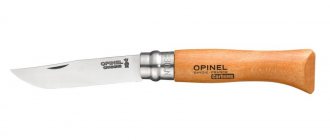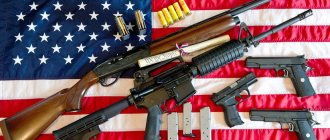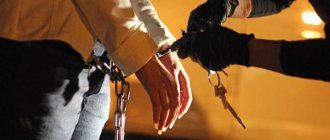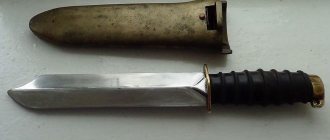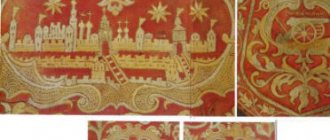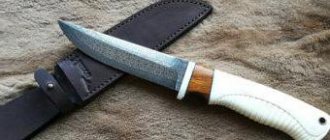| The first appearance of the legendary Finnish knife dates back to the mid-30s of the 20th century. At the very beginning, this tool was used for household needs. With its help it was possible to cut objects, work with wood, trim branches, crush ice, butcher game and perform other actions. Throughout its existence, it was constantly modified, as a result of which it began to be used as an effective edged weapon by special units and departments of the NKVD. Knife production lasted until the end of the 70s in the village of Vacha. Officially, the knife was not used in service among operational employees, but was issued as clothing allowance. Edged weapons were actively used during the Great Patriotic War, as well as after its completion. It could be seen among employees of the 9th Directorate of the KGB of the USSR. Despite the fact that in 1940 they actively began to produce the HP-40 scout knife, the production of the finka did not stop. Even today, such a weapon is used by some employees of the Russian special services, but quite rarely, since a large number of Finnish women were destroyed in the 90s. At the moment, there are many replicas available that fully replicate the original model in size and shape. They can have handles and blades made of different materials and types of steel, and also vary in size. |
The main features of the Finnish NKVD
When manufacturing, the Finns took as a basis a compact-sized hunting knife from the famous Swedish master Pontus Holmberg. At the same time, the handle material was replaced. Instead of deer antler, they began to use bone, plastic or wood with an original texture, giving the weapon a unique look. The shape of the guard has also been changed, becoming S-shaped. The handle linings were fixed with four rivets.
To produce the blade, high-quality carbon steel was used, which is distinguished by its strength, ease of maintenance and long-lasting sharpening time. The handle had an oval shape with a widening in the central part and no indentations for the fingers. This design was considered ideal, as it corresponded extremely accurately to the anatomy of the palm. In front of the guard, there was an unsharpened area on the blade, which was intended for a specific grip.
The knife is characterized by excellent balance. The center of gravity is located under the index finger. The blade has a fuller, which reduces weight and improves the strength of the weapon. A high-quality sheath is used as an accessory for the knife, which guarantees safe storage and protection from various external factors. For the manufacture of such products, genuine leather of black or brown color was used. They are equipped with special loops for fastening to a belt and a safety clasp with a latch.
Connect with us:
A knife is a steel plate, sharpened on one side, with a handle. Behind such a dry definition lies a huge variety of sizes and shapes, which simply takes the breath away of true connoisseurs. You can easily verify this by looking at our assortment. We offer:
- Hunter knives;
- tourist knives;
- kitchen knives for professionals;
- cutting knives;
- accessories for storing and carrying weapons.
From us you can buy a handmade knife for fishing, hunting, hiking, picnics and just for fun. Handmade knives are not ordinary stampings that are made in huge batches at a factory.
Here, every knife contains the work of a master, his skill and a piece of his soul. All knives are different, they seem to have their own character and character. They differ from knives that left the factory in many respects. Firstly, in terms of quality. Large production cannot ensure proper quality control. The master adjusts each element of the knife and processes it. After all, he stands for the quality of the knife with his name and reputation. Secondly, each handmade knife is unique. Even two identical models differ in shape, blade length and handle. After all, when working manually, it is very difficult to repeat everything 100%. And each knife will be one of a kind, there is no other like it in the world. Therefore, for those who value quality and are tired of consumer goods, a handmade knife will be the best choice. Hunting knives have always attracted both boys eager for adventure and adult men who remain boys at heart, thirsting for new sensations. After all, this is a special type of weapon that cannot be compared with any other. Even knives created by modern manufacturers carry the spirit of past eras. But the function of a hunting knife today has changed a lot. Previously, a good knife was simply indispensable for a hunter and sometimes was the only protection against a wild animal. Today, a hunting knife is not a means of defending or attacking an animal (with very rare exceptions), but is used for cutting prey in camps. But, having changed their purpose, the knives did not give up their positions. This is confirmed by the huge number of types of knives that can be purchased today. Among them you can choose knives for finishing game, for cutting large game, small animals, poultry, and fish. A large category is represented by knives that are designed to perform household work. They can be used to fix something, cut something, cut branches. A real hunter can have in his arsenal a whole set of knives for different purposes. buy a hunting knife not only for hunting, but also for interior decoration. It’s not a sin to show off such beauty to your guests. Artistic casting from brass and cupronickel can give knives an original look. The guards of such knives are cast in the shape of the heads of birds and animals. Kitchen knives: the choice is yours. Kitchen knives, hatchets and hoes are no less in demand today. All of them are intended for use in cooking. Of course, much of the work in the kitchen can be done with a utility knife. But there are also many special knives that are used for certain types of work. In addition, a professional chef should have a whole collection of such knives, and definitely a favorite one that no one has the right to even touch. You can purchase knives from various types of steel - forged, stainless, Damascus. The most popular among edged weapon connoisseurs today are knives made of Damascus steel - twisted, end-cut, rifled, mosaic. Multilayer Damascus steel is a unique material with a intricate pattern, excellent cutting properties and high strength. Damascus is produced by combining different grades of steel with different carbon contents, followed by welding and forging. Each grade of steel has good characteristics, and in combination they give simply excellent results. The main advantage of such knives is their ability to hold an edge for a long time. No less often, high-alloy forged steel is used to make knives. It differs from other steel grades in its strength, corrosion resistance, and excellent cutting properties. Buying a high-quality knife that meets all the needs of hunters, tourists or professional chefs is not easy. After all, it is impossible to determine the quality of a product by appearance. But a good knife should not just be sharp, comfortable and light. It should keep the cutting edge sharp for a long time and also have an easy cut. Damascus steel blades best meet these requirements. No matter what difficulties the owner of such a knife encounters, he will be able to skin an animal and cut brushwood for a fire. It’s even nice to hold such a knife in your hand: its handle made of wood or horn fits perfectly into the palm. But it’s difficult to guess in advance what the knife will be like. Only after the buyer begins to use the knife will he be able to judge how convenient and durable the knife is. By purchasing the best hunting knives from us, the consumer can be sure that the models presented here meet all requirements and will satisfy even the most demanding taste. This happens due to the fact that:
- the best alloys are used in the manufacture of knives;
- the knives have a design that fully corresponds to the purpose and intended load;
- the products are absolutely safe;
- The handle and case are made of natural materials.
You can buy a knife in an online store at a very affordable price. This is very easy to do: just go to the website, register and read the samples and recommendations for choosing them. All available samples are conveniently grouped depending on the type of alloy, design features and purpose. Therefore, finding a suitable product will not be difficult. From us you can buy not only knives, but also blades. This allows the consumer to “dress the knife” to their liking. Blades, like knives, can be made from various types of steel. If you like the model and fully meet the requirements for it, then you can order a knife right here. If you need to clarify the characteristics of a particular model or have any difficulties placing an order, you can contact our specialists.
Advantages of a knife
The main advantages of the NKVD Finnish include:
- functionality;
- compact dimensions;
- simple and reliable design;
- good balance between handle and blade;
- wide back;
- pleasant to the touch handle due to the use of precious wood;
- straight blade with fullers.
The blade is characterized by its small size, increased rigidity and one-sided sharpening. The NKVD Finka is a combat knife thought out to the smallest detail, with which it is quite easy to deliver piercing blows. The S-shaped guard prevents the hand from slipping and protects against cuts. The base of the handle consists of carbolite and synthetic polymer.
In our catalog you will find the NKVD Finka, made using various materials and steels
Blade for Finka knife NKVD steel 9хф
Blade for the Fink NKVD knife made of steel, grade 9хф.
The blade is oxidized to a protective mirror-black layer.
When ordering from 5 pcs of this model, the cost is 1000r/pc
************************************************************************************************
Characteristics of the material. 9HF(90HF)
| Brand | Steel 9ХФ(90ХФ, 9Х1Ф) |
| Classification | Alloy tool steel |
| Substitute | Steel HVG, 9Х1, Steel Sv-01Х12Н6М, Steel 7N2MFA |
| Other designations | Steel 90HF; Art. 90HF; 90HF; 90ХФ-Ш; 9Х1Ф; 9Х1Ф-Ш |
| general characteristics | High-carbon “knife” steel with increased corrosion resistance |
| Application | Steel grade 9ХФ (90ХФ) is used: for the manufacture of frame, band, circular saws, knives for cold cutting of metal; trimming dies and punches for cold cutting of metal burrs; center punches; work and support rolls for cold rolling of metal; work rolls of rail and beam, large-section and wire crimping and section mills for hot rolling of metal, subject to intense wear and operating under conditions of minimal or moderate shock loads; work and support rolls and bandages of composite support rolls of sheet, crimping and section mills for hot and cold rolling of metal. |
Chemical composition in % of material 9ХФ(90ХФ)
| Carbon (C) | 0.80 — 0.90 |
| Vanadium (V) | 0,15 — 0,30 |
| Tungsten (W), no more | 0,20 |
| Iron (Fe) | the basis |
| Silicon (Si) | 0,10 — 0,40 |
| Copper (Cu), no more | 0,30 |
| Molybdenum (Mo), no more | 0,20 |
| Manganese (Mn) | 0,30 — 0,60 |
| Nickel (Ni), no more | 0,40 |
| Titanium (Ti), no more | 0,03 |
| Phosphorus (P), no more | 0,03 |
| Chromium (Cr) | 0,40 — 0,70 |
| Sulfur (S), no more | 0,03 |
Brief characteristics of “knife” steel 9ХФ(90ХФ)
Steel grade 9ХФ (90ХФ) is a high-carbon steel, the carbon content of which is almost 1.5 times higher than in a 65G hoist. Accordingly, this grade of steel holds an edge better. In industry, it is used to make “cold” stamps and knives/cutters for cold cutting of metal, frame saws and other metal-cutting tools. The presence of vanadium additives in steel contributes to less warping of parts during hardening and increases the strength of the blade and the impact strength of the steel (and, accordingly, the cutting edge of the knife) at temperatures below 0 degrees. according to C. With proper hardening, the hardness of the blade can reach 62 HRC without a significant increase in the fragility of the product, which is a significant advantage at low temperatures of use. The hardenability of grade 9ХФ (90ХФ) is almost 2 times better than that of 65G steel, which means that when making knives the probability of the blade not being hardened is less.
When using 9ХФ(90ХФ) steel in severe weather conditions, a significant advantage compared to other “knife” grades (ШХ15 and 65Г) is increased corrosion resistance due to complex alloying with chromium and vanadium.
In terms of chemical composition, this steel is close to HVG steel and, when hardened, it “leads” quite little due to alloying with vanadium.
How to buy replicas of legendary knives
Our online store operates around the clock, and is always ready to provide advice, accept and process orders, and promptly ship goods to any region of the Russian Federation. We are manufacturers, therefore the price we offer for a scout knife or NKVD Finnish knife does not contain additional intermediary markups. In addition, the selling price can be further reduced if 10 or more units of knife products are purchased.
To place an order, use the “Cart” option in the catalog, call the number or send a request by email
Materials and equipment
The original HP-40 reconnaissance knife, as well as its subsequent modifications, was made from U-7 carbon tool steel. This alloy is aimed at the production of metalworking, pneumatic, and woodworking tools (axes, chisels, chisels, hammers, sledgehammers, screwdrivers) and is not very suitable for the production of universal knives of increased reliability. In addition, the absence of alloying with chromium or nickel made the material extremely unstable to corrosion. At the same time, U-7 steel was accessible and cheap, had increased impact strength and was easily sharpened in the field.
Modern production of NKVD finks and scout knives uses higher quality homogeneous and stacked alloys - damask steel, multi-layer Damascus, corrosion-resistant steels X12MF and D2, stainless steel 95X18.
Damascus blades with a characteristic beautiful surface pattern, which is formed when forging and repeatedly folding a package of various grades of steel, are distinguished by increased aesthetic content, structural reliability and resistance to refractive loads. Also, the original decor is present on the blades made of heavy-duty damask steel.
A mandatory addition to the HP-40 knife and other replicas of legendary blades are genuine leather sheaths equipped with a belt clip. Some scabbard variations may have a wooden base to achieve complete resemblance to the historical originals.
The main signs of edged weapons
This issue is regulated by several legal acts of the Russian Federation. First of all, this is GOST R 51215-98 “Melee weapons. Terms and definitions", GOST R 51500-99 "Hunting knives and daggers", GOST R 51644-2000 "Cutting and skinning knives", GOST R 51501-99 "Tourist and special sports knives". According to these documents, to be considered a bladed weapon, a knife must meet the following parameters:
1. Blade length – more than 90 cm.
This is true for folding knives, ballistongs, and fixers, which include the NKVD knife. This figure has nothing to do with the distance to the heart - it is taken simply for convenience, so a harmless pocket knife with a 95 cm blade will be considered a weapon, but a robber-looking skinner with an 89 cm blade will not.
2. Butt thickness from 2.7 to 6 mm.
It is believed that it is difficult to inflict a serious puncture wound with a knife with a thinner blade, since the blade will bend or break, and thick knives are generally not suitable for this due to low penetrating ability - serious effort is required to pierce something with such a “crutch”.
In practice, even knives with a spine of 2.4 m less than mm, made from appropriate steels - for example, X12MF or 110X18 - perfectly pierce hard objects without breaking or deforming.
3. Handle with limiters.
This includes a guard, a protruding prytin, or finger grooves on the blade. A single-sided limiter of up to 5 mm or a double-sided limiter with a total length of protruding parts of up to 5 mm and a thickness of up to 3 mm is allowed. This parameter, again, affects the possibility of inflicting puncture wounds without the risk of injuring your own hand.
4. Rockwell hardness from 25 units.
Of course, if you can cut something with a blade hardened to less than 25 HRC, then only a couple of times - most kitchen knives are much harder.
5. Sharpened blade.
According to this parameter, perhaps only throwing knives and all sorts of “souvenirs” - Cossack checkers, katanas and other zweihenders - are definitely not melee weapons. There is one “but” - a sharpening angle of more than 30 degrees is considered safe. The smaller it is, the more aggressive the cut and the more dangerous the blade.
What is very important is that in order to fall under the definition of “edged weapon”, your Finn must meet all five parameters. Otherwise, you are holding a household knife, a cutting knife, a tourist knife in your hands - whatever you want, but not a combat one. But it would be nice to have a certificate with you that confirms this point - most licensed manufacturers complete their products with such documents.
All other parameters, such as the presence of a “blood hole”, which is actually called a “dol”, is done for rigidity or for decorative purposes, and has nothing to do with blood, you can not attach much importance.
“It’s like someone is in a tavern fight” - Finnish knives at the turn of the century
Since the mid-late 19th century, puukko have already been well known in Russia. They began to be called “Finnish knives”, or simply “Finnish knives”. With the seizure of power by the Bolsheviks, the popularity of the knife only increased. The Finnka became directly associated with crime - a small, deadly weapon tucked into the boot was a mandatory attribute of any Zhigan of that time. Finally, the Soviet government realized the danger of this type of blade. The new criminal code of the RSFSR of 1935 assigned the status of an illegal weapon to the “Finnish knife”.
From that moment on, the history of the Finnish woman took two parallel paths. The first way was the prison one: “finyak”, “dunka” or “kishkoprav” were made by prisoners, whose number was growing in countless camps. The second way is military: in 1935, a new type of knife with an S-shaped guard was adopted by employees of the Gulag, police, counterintelligence, and border services. The glorious history of the legendary Finnish NKVD began.
Zekovskaya and military Finns:
Chronicle of creation
The national hunting knife of Finland “puukko” was used as an image for production. Gradually, the Russian version acquired specific design features. The history of the creation of the knife began in the mid-30s of the twentieth century, when Soviet craftsmen developed an original model for arming the special forces of the NKVD. An example for creating drawings was a miniature hunting knife by the Swede Pontus Holmberg. Beginning in 1935, knives of this type began to be mass-produced at. Knives arr. 1935 were never referred to as NKVD weapons in documents, they were called “Swedish-type knife.”
Serial production of bladed weapons was established at, which is located in the village of Vacha, Nizhny Novgorod region. The main difference from the Swedish version was the change in the guard, as well as the use of plastic instead of bone for the handle.
In 1940, the Finnish knife was adopted by intelligence officers, but it had too many design differences from what was used by the NKVD. The weapon was part of the material allowance of NKVD employees, while this model was never officially in service with the Soviet army.
Puukko - the ancient prototype of the Finnish woman
The blades that became the basis for the future NKVD blades were made even before the invention of iron. In Scandinavia, many bone, flint, and bronze knives are found, which in shape and size are almost identical to Finnish knives as we understand them.
The closest relative of this type of weapon is the puukko. This is a small knife traditional for Finland, with a characteristic lowering of the butt line with a “pike”, fullers and a beveled head of the handle. The weapon was so popular among the Finns that even a special term appeared - puukkojunkkari, which means “armed hooligan”.
Such a weapon is extremely convenient for inflicting deep puncture wounds - the rounded pommel rested on the inside of the palm for support, and the beveled butt and narrow blade provided high penetrating power. The small dimensions of the knife and the absence of a guard made it possible to carry it secretly - for example, behind the top of a boot.
